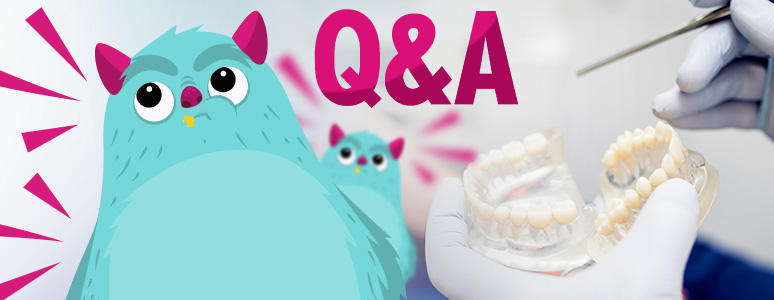
Mandibular Tori: Removal, Symptoms, Causes, Surgery Treatment and Pictures
Key Facts
- Mandibular tori, or torus mandibularis, refers to benign bony growths that occur on the inner side of the mandible
- Approximately 5 to 10% of the population have mandibular tori
- Generally asymptomatic but can cause discomfort if they are large or interfere with dental appliances
- Causes are a combination of genetic factors and environmental influences such as teeth grinding
- Treatment is not typically necessary unless the tori interfere with oral function or prosthetic devices
What is Torus Mandibularis (Mandibular Tori)?
Mandibular tori, scientifically termed torus mandibularis, are bony growths or protuberances that appear along the inner surface of the mandible, which is the lower jawbone. These growths are generally non-cancerous and benign. They can vary in size, shape, and number. Some individuals may develop a single torus, while others may have multiple growths.
Mandibular tori are often symmetrical and located above the area where the tongue rests, in the premolar region. They usually develop in adults, but can be found in individuals of any age. It is also worth noting that the condition is more prevalent in certain populations, and tends to run in families, suggesting a genetic component.
What Are The Symptoms of Mandibular Torus?
In many cases, mandibular tori do not produce any symptoms and are discovered incidentally during dental examinations. However, when symptoms do occur, they may include:
- Noticing a Bump or Hard Mass: Individuals might feel or see a bony growth on the inside of their lower jaw.
- Discomfort or Pain: While tori are generally not painful, if they grow large enough they can cause discomfort, especially when eating certain foods that press against them. Additionally, they can ulcerate the mouth’s mucosa if traumatized.
- Difficulty with Dental Appliances: Larger tori can interfere with the fit and placement of dental appliances such as dentures or braces. This can cause discomfort and necessitate adjustments or even removal of the tori.
- Speech Difficulties: In rare cases, if the tori are exceptionally large, they might affect the normal movements of the tongue and cause difficulties with speech.
It is important to understand that the presence of mandibular tori is not indicative of any underlying disease, and they are considered a normal anatomical variation.
What Causes Mandibular Tori?
The exact cause is not well understood. However, it is believed to be due to a combination of genetic and environmental factors.
- Genetic Predisposition: There is evidence to suggest that it run in families, indicating that there may be a genetic component. Certain populations, such as Asians and individuals of Inuit descent, have higher rates of mandibular tori.
- Teeth Grinding and Clenching (Bruxism): The excessive force and pressure from clenching or grinding the teeth are thought to contribute to the development of mandibular tori.
- Dietary Factors: Some studies suggest that a diet high in hard or tough foods may promote the development of mandibular tori, as the jawbones are subjected to increased mechanical stress during chewing.
- Bone Response to Stress: Bones have the ability to adapt to forces and stresses placed upon them. Mandibular tori might be the result of the bone’s response to stress in the oral region, causing a buildup of bone in specific areas.
Comprehensive List of Mandibular Tori Causing Factors:
- Bruxism (teeth grinding)
- Mouth anatomy type
- Higher bone density
- Vitamin deficiencies
- Genetics
- Age over 30 years old
- Gender (more common in men)
- Trauma to the jaw
- Calcium-rich diet
- Fish consumption (especially raw or undercooked fish)
- Chewing on meat (dry, raw, or frozen)
- Other oral health problems
When Should I Consult My Dentist About Mandibular Tori?
It’s essential to consult your dentist if you suspect you have dental tori. If you encounter any symptoms like challenges with dental appliances or pain located in the lower jaw or mandible it may be a good idea to schedule an appointment with your dentist. If you notice any changes in your mouth’s feel, such as unexplained lumps or bumps, or experience discomfort, it’s crucial to seek dental advice promptly. In case you have a history of Mandibular tori monitor any changes in their shape, color, size, or general appearance and consult your dentist if you notice any changes or if new growths emerge.
Is It Normal to Have Mandibular Tori?
Mandibular torus are considered a normal anatomical variation and not a disease or disorder. They are relatively common, with studies indicating that they are present in approximately 5 to 10% of the population. The prevalence can vary among different ethnic groups. While dental tori may not be present in everyone, having them is not abnormal or inherently harmful.
What Are the Complications of Mandibular Tori?
While mandibular tori are generally harmless, there are some potential complications and issues that can arise, especially if the tori are large:
- Interference with Dental Appliances: Torus mandibularis can interfere with the fit of dental appliances like dentures, mouth guards, or retainers. This can make wearing such appliances uncomfortable or even impossible without modification to the appliance or removal of the tori.
- Oral Hygiene Challenges: Larger tori can make cleaning certain areas of the mouth more difficult, possibly contributing to the buildup of plaque and increasing the risk of gum disease and cavities.
- Ulceration and Irritation: In some cases, the overlying tissue on the tori may become thin and susceptible to ulceration or irritation, especially from food or dental appliances.
- Psychological Impact: Some individuals may feel self-conscious about the appearance of mandibular tori, especially if they are particularly large or prominent.
How Are Mandibular Tori Diagnosed?
Mandibular tori are typically diagnosed through a physical examination by a dentist or oral surgeon. During a routine dental exam, the professional may notice the presence of bony growths along the inner side of the lower jaw. Here are the steps generally involved in diagnosing mandibular tori:
- Visual Inspection: The dentist will visually inspect the oral cavity for any abnormal growths or structures.
- Palpation: Using gloved fingers, the dentist may feel the inside of the mouth to assess the size, shape, and consistency of the growths.
- Medical History: The dentist may ask questions regarding when the patient first noticed the growths, if they have been growing, and if there is any family history of similar growths.
- Dental Imaging: In some cases, dental X-rays or other imaging techniques might be used to get a more detailed view of the tori and the surrounding structures.
- Differential Diagnosis: The dentist may rule out other conditions or growths that could be mistaken for torus mandibularis.
Once diagnosed, the dentist or oral surgeon will discuss the findings with the patient and, if necessary, talk about potential management or treatment options.
Mandibular Tori Removal: Procedure, Recovery, and Potential Risks
The Procedure: What Should You Expect
Mandibular tori removal is a surgical procedure typically performed under local anesthesia. It is usually performed as an outpatient surgery, meaning you will not have to spend any extra time in the hospital or your dental clinic (unless you the surgery was with general anesthesia which may be necessary in some of the cases). During the surgery, a small incision is made in the oral mucosa (the lining of the mouth) over the torus. The torus is then cut away with specialized tools, and the area is smoothed. Finally, the incision is stitched closed to facilitate healing.
Post-Operative Recovery and Required Care
Post-operative care involves rest, good oral hygiene, and a soft food diet until the area heals. Pain, swelling, and bruising are common after the procedure but should subside within a few days to a week. Pain relievers and anti-inflammatory drugs may be prescribed to manage these symptoms. It is also crucial to avoid smoking and alcohol consumption as these can delay healing and cause complications. Your surgeon will provide you with detailed instructions on oral care and pain management protocols right after the surgery. Please be aware that a full recovery may take up to several weeks, but only the first days will be unpleasant.
Bony Growths Removal Risks
Like any surgical procedure, tori removal carries some risks. Possible complications include infection, damage to nearby structures (like nerves or teeth), excessive bleeding, or difficulty opening the mouth (trismus). However, with careful surgical technique and diligent post-operative care, these risks can be significantly minimized.
Minimizing Complication Risks from Mandibular Tori Removal
To minimize the risk of complications, it’s essential to follow all pre-and post-operative instructions provided by your dental healthcare provider. This may include maintaining good oral hygiene, taking prescribed medications, avoiding strenuous activities, and attending all follow-up appointments. The list of possible risks involved in the surgery is as follows: bleeding, infection, local numbness, damage to oral structures in the area of surgery (this includes teeth, nerves, and gums), jaw stiffness and limited range of motion, possible scarring and complications related to anesthesia (this applies to both local and general types of anesthesia). Discuss all of these risks with our surgeon before the procedure to calm your mind and make right decisions.
Prevention and Prognosis of Mandibular Tori
As the exact cause of mandibular tori is unknown, specific preventative measures have not been identified. However, managing contributing factors such as bruxism may potentially reduce the likelihood of their development.
The prognosis for mandibular tori is generally good. They are benign growths and don’t evolve into malignancies. However, they can reappear in some cases, even after surgical removal, especially if contributing factors persist.
In terms of management, most cases of dental tori do not require any specific treatment unless they cause discomfort, affect oral function, or interfere with prosthodontic procedures like the fitting of dentures. For those that do need treatment, surgical removal is typically the go-to option.
Should I Worry About Bony Growth Called Mandibular Tori?
In most cases, there is no need to worry about mandibular tori. They are benign growths and do not pose a risk for cancer or other serious health issues. For many people, mandibular tori do not cause any symptoms or problems.
However, there are certain situations where they might warrant attention:
- If They Cause Discomfort or Pain: If the tori are large and causing discomfort, pain, or difficulty with eating, it is worth discussing with a dentist.
- If They Interfere with Dental Appliances: If you wear dentures, retainers, or other dental appliances, and the tori are affecting the fit, you might need to seek advice from your dentist on managing this issue.
- For Peace of Mind: If you are concerned about any growths in your mouth, it’s always a good idea to consult with a healthcare provider to alleviate worries and get accurate information.
Mandibular Tori vs Torus Palatinus (Palatal Tori)
Palatal Tori (Torus palatinus) is a similar condition of a dental tori, but it refers to a bone growth on the roof of your mouth (maxilla) instead of the lower part of your jaw (mandible). These growths are also harmless, but can be inconvenient and uncomfortable. They can be congenital or develop it later in life.
Bottom Line
Mandibular tori are common, benign bony growths on the inner surface of the lower jaw. They are generally not a cause for concern and often do not require any treatment. However, if they cause discomfort, interfere with dental appliances, or if you have concerns about oral health, it is advisable to consult a dentist. Regular dental check-ups are important for monitoring oral health, including the presence of mandibular tori. If needed, there are options for management and treatment, but for most people, mandibular tori are a harmless anatomical variation that does not affect their quality of life.
This article is complete and was published on May 24, 2023, and last updated on December 05, 2023.



